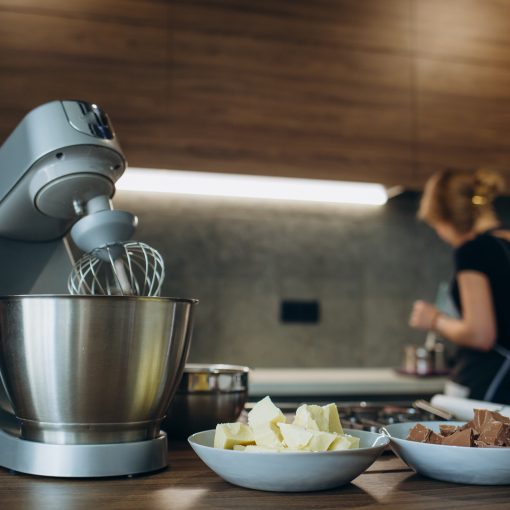Mixers are a vital tool in both kitchens and industrial settings. When they stop working, it is often due to electrical issues that build up over time. At Mixer Repair Services, we see recurring patterns in the types of electrical failures that cause breakdowns. By understanding these problems, we can help prevent them and extend the life of mixers.
Power Supply Problems
Many repair calls begin with mixers that will not turn on at all. Often, the issue is as simple as a faulty cord or a worn-out plug. Wires inside cords bend repeatedly during use, and over time they can break or fray. When this happens, the mixer loses a consistent power connection.
We also see problems with outlet compatibility or blown fuses. If a circuit is overloaded, the breaker trips and the mixer shuts down unexpectedly. Our team always recommends checking outlets and ensuring mixers are plugged into a proper supply. For more detailed support, you can learn more about mixer repair services Calgary and see how these issues are addressed safely.
Motor Overheating and Electrical Windings
Another frequent cause of electrical failure involves the motor itself. Inside the motor are copper windings that carry current and generate power. When mixers are overused without cooling time, these windings can overheat and lose insulation. That leads to short circuits or permanent motor damage.
In some cases, debris or hardened food causes the motor to work harder than intended. When this happens, excess current builds up and accelerates overheating. We advise keeping the mixer clean and avoiding continuous use for long stretches. Our technicians often test winding resistance to confirm if the motor can be restored or if it needs replacing.
Control Switch Failures
Mixers rely on control switches to regulate speed and start or stop the unit. These switches are used constantly, and with time, the contacts inside them burn out. Once that happens, you may notice the mixer turning on only at certain angles or refusing to change speeds.
Electrical arcing during switching is the main culprit. When power flows through a worn contact, it can generate sparks that worsen the damage. We frequently replace speed selectors, knobs, or switch assemblies. For anyone who needs urgent help, same day mixer repair in Calgary is available to get the unit back in service quickly.
Faulty Capacitors
Capacitors are small electrical components that help mixers start up smoothly. When they fail, the mixer might hum but not spin. In some situations, the motor may start slowly or stall under load. This is one of the more common electrical failures in older units.
The capacitor stores and releases energy during startup. If it becomes weak, it cannot deliver the extra boost the motor requires. Replacing capacitors is a relatively quick process for our team, but it requires proper testing equipment to identify the fault. We encourage routine checks when mixers show weak starting power.
Wiring Harness and Loose Connections
Inside every mixer is a network of wires that carry power between switches, motors, and control boards. With vibration and constant use, connections can loosen or wires can become pinched. When this happens, mixers may work intermittently or shut down mid-use.
We often see melted insulation caused by heat buildup at poor connections. Left unchecked, these can lead to short circuits or fire hazards. Our approach is to inspect every wire path during service and secure them properly. This prevents further wear and restores reliability to the machine.
Electronic Control Boards
Modern mixers often include electronic control boards that handle timing and variable speeds. While these boards add precision, they are also prone to failure. Moisture, overheating, or power surges can damage sensitive circuits.
When control boards fail, mixers may behave unpredictably. Symptoms include erratic speed changes, lights flickering, or complete shutdown. Repairing these boards usually involves replacement rather than fixing individual parts. For many owners, knowing that these boards are vulnerable highlights the importance of using surge protection and keeping mixers away from steam or damp areas.
Preventive Maintenance Tips
We always stress prevention to extend mixer life. Keeping the machine clean and free of buildup reduces electrical strain. Avoiding continuous heavy loads allows the motor to cool. Inspecting cords, plugs, and outlets ensures safe operation.
Another useful tip is to give mixers a break between large batches. Allowing a few minutes of rest helps avoid overheating in both the motor and electrical windings. For complex issues, it is safer to rely on professionals. If a problem persists, it is best to contact us for a proper diagnosis and repair service.
FAQ
Why does my mixer suddenly stop working mid-use?
This often happens due to loose wiring or overheating protection kicking in. Allow the mixer to cool before restarting, but if it repeats, professional service is needed.
What should I check first when my mixer will not turn on?
Start by inspecting the power cord, plug, and outlet. If all look fine and the breaker has not tripped, the issue is likely internal.
Can a faulty capacitor damage the motor?
Yes, if a capacitor fails, it forces the motor to draw more current than intended. This can overheat and damage the motor windings.
How often should mixers be serviced?
For regular household use, a yearly inspection is often enough. In commercial kitchens, more frequent checks every six months are recommended.
Is it safe to keep using a mixer with sparks from the switch?
No, sparks indicate worn switch contacts. Continuing to use it increases the risk of further damage or fire. A switch replacement is required.




